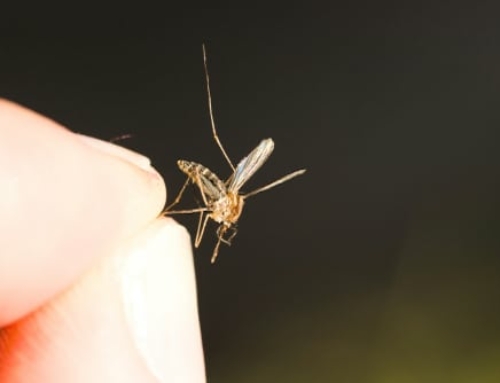Summertime brings many joys, such as warm weather, time spent outdoors, and the arrival of new crops. However, there is a big downside: insects. And no other bug compares to the persistent buzz of a mosquito. Their itchy bites and annoying buzzing can drive even the most cool-headed person crazy in the summer heat.
Keep reading to learn about the most effective mosquito traps and how they might help you.
How Do Mosquito Traps Work?
The majority of mosquito traps are designed to function by luring the insects using one of several different strategies. Some people get rid of insects using bright lights, while others turn to more technologically advanced methods.
Many advancements have been made for mosquito traps, which you will soon learn about. The enhancements introduced to these traps help to ensure that more mosquitoes are trapped and eliminated. This enables you, your family, and your visitors to enjoy indoors and the outdoors without worrying about catching harmful diseases from mosquitoes.
What are the Common Traps Types That Work?
Every year, people all have a hard time dealing with those annoying mosquitoes. The discomfort is not limited to only being bitten and experiencing widespread itching across the body. You’ve probably thought about many different methods to keep mosquitoes away from your loved ones as part of your efforts to keep people you care about safe.
The most sophisticated and efficient traps can replicate the prey’s chemical, odor, and temperature profile. There are some who make use of carbon dioxide, while others favor the usage of heat and light.
1. The Carbon Dioxide Mosquito Traps
Breathing is the closest thing to the emission that carbon dioxide traps create. The breakdown of propane fuel into carbon dioxide makes these traps very effective. However, they cost a lot of money to acquire and keep up.
Generally, insect infestations may be reduced over a wide region using CO2 traps. The efforts of certain units may protect an area. Those who spend much time outside, whether for business or social events, should carefully consider these traps.
2. The UV Light Mosquito Traps
These classic mosquito traps have been used for generations. They successfully rid homes and yards of unwanted pests.
However, the major downside to these traps is that they often make a lot of noise when they catch insects. Also, children may be tempted to reach out and touch attractive, bright lights, which might be dangerous. But there isn’t anything to worry about if you store them safely and handle them cautiously.
3. The Heat And Light Mosquito Traps
These traps emit attractive ultraviolet and visible light at spectral lines. The heat imitates a mammal’s body temperature, convincing them that a meal is approaching. Heat traps function like carbon dioxide-based mosquito traps. Generally, vacuums are used to heat and moisture to pull them inside.
The light produces a frequency to which the insects are especially sensitive, killing them instantly. Traps for heat and light are less powerful but more flexible. They are also versatile enough for both indoor and outdoor usage.
4. The Homemade Mosquito Traps
A common ingredient in homemade traps is a mix of yeast and sugar, which, when combined, produces carbon dioxide. This lures the mosquitoes into a container with a pool of water, where they ultimately die. It is somewhat ineffective when used indoors, and it is pointless when used outdoors.
Even if you do not have any of the common mosquito repellents you regularly use on hand, that doesn’t mean you have to spend the night hunting for mosquitoes.
By using some common materials, you may create a great mosquito trap. Some homemade traps are:
- Flying Insect Amish Trap
- Bottle trap made with yeast and brown sugar
- Bottle trap made of vinegar and baking soda
- Light Trap & Dish Soap
- Dish soap and vinegar bottle trap
Difference Between Indoor and Outdoor Traps
You may use some traps indoors, while others are better suited for the great outdoors. Generally, outdoor traps often employ higher concentrations of carbon dioxide and have longer ranges, whereas indoor traps are typically not water-resistant and have shorter effective ranges.
A limited number of bugs may be controlled temporarily using an indoor trap. Therefore, these traps work best when there are just a few insects in a contained area. They are often low-priced and easily transportable devices that employ light and heat to attract insects.
The population of female mosquitoes may be kept under control and reduced with the help of a trap placed outdoors. With this, the population drops and may eventually die out completely. You’ll want your traps to be effective, luring insects from farther away.
Where should you put mosquito traps?
Be careful to properly set your traps within and outside your house, considering the type you use. It would be best to use CO2, H2O, or heat traps in direct range of the places where the insects are most prone to reproduce. Such traps should be set up in any area with plants or stagnant water.
LED light and vacuum traps may be set up in any place you choose in the house. And if it’s transferrable, you can take it outdoors and place it conveniently close by. Ensure it’s not in the way of any major roads or populated areas. Put conventional insect zappers where kids or dogs can’t reach them to prevent any unintentional shocking.
Conclusion
Using mosquito traps is an efficient method of reducing mosquitoes and preventing the transmission of illnesses they carry. It is important, however, that the traps be set up in the right spot.
Knockout Mosquito Systems provides a free evaluation if you’re sick of being bitten by mosquitoes and other bugs in your yard. Visit their website and fill out their contact form to eliminate your mosquito infestation today.


